


Robin was introduced to the Society as a collector of battle fields and has lectured
several times to more than a single branch and more recently on ZOOM.
My Christmas 2024 Military History Newsletter The year 2024 has not been kind to me, as many of you will know. I have not set foot on a battlefield but I have managed a few talks and written one or two journal articles so I hope some of you find my ramblings of some interest. Thus quite a few book recommendations of works that I consider noteworthy.
O for a book and a shady nook,
ANONYMOUS Not all of them are books I would recommend you should be reading. Semi-seriously, I maintain that books on a military history topic that are less than 400 pages will not be worthwhile to spend time reading. So a number of these are at least that length and you need to set aside some time to read them through. It is only by reading right through from beginning to end that you are likely to appreciate what the author is trying to convey. Many book reviews that appear in newspapers and other publications are written by someone who has not, cannot have, read the book right through for various reasons. Of course, reviewers often get a pre-release copy but how many busy people have the free time to read and evaluate a book of such length?
Peter Caddick-Adams’s ‘Sand and Steel’, a new history of D-Day is a case in-point. It is 1,000 pages long and consists principally in anecdotes collected from people who were active participants or intimately involved in what was surely the greatest amphibious landing in history. One that will surely never be repeated. It took me a considerable time to read it through, even when languishing in the Amber Valley Care Centre for more than a month. I don’t dispute a prominent historians’ verdict ‘Extraordinary’ and another who describes it as ‘Magisterial’. It’s a good example of Second World War books which are appearing in the last few years which are examples of the huge amount of research that has been done recently now that so much new data has become available.
As far as books on the topic of the Anglo Boer War, our most important war, is concerned, the publication this year (2024) of Albert Blake’s ‘Jopie Fourie – ‘n Besinning’ was likely the most significant. Albert Blake is well-known for his books on controversial characters like this one and Robey Leibbrandt and Hans van Rensburg. I have owned, read and enjoyed several of his books: Boereverraiers, and Broedertwis on the de Wet brothers.
* * *
I wrote the following review of Jopie Fourie, but only after reading it from cover-to-cover I assure you!
Jopie Fourie – ‘n Besinning – Albert Blake Albert Blake’s ‘Jopie Fourie ‘n Besinning’ (a reflection) is certainly an excellent study of a young army officer who rebelled against the Union of South Africa’s government in 1914. Without resigning from the army he joined the rebels and then entered armed conflict with his former comrades. He was soon reduced to a small commando of about fifty men operating in the area between Pretoria and Warmbad (now Bela Bela) and captured by the government’s forces. Military law required that he face trial by court martial which took place in Pretoria in December 1914. They found him guilty of treason and sentenced him to death – military law would demand nothing less for desertion and then armed rebellion. He was shot by firing squad in Pretoria Central prison the day after being found guilty. Fearful of civil unrest, certain measures were taken by the government of Botha and Smuts. The body was buried secretly and only returned to his family some years later. Publication of the letters, a good many of them, written in the hours he spent in the death cell was suppressed. Nonetheless, they were transcribed and published, the text is freely available and reproduced, all of them, in the book.
Albert Blake has written a sympathetic account of the man and his aspirations. Jopie’s performance in the Anglo Boer War is not well documented, apart from his wounding and capture near Onderstepoort. He was seriously wounded in the thigh and it was several months before he was able to be mobile again. He walked thereafter with a limp. Jopie Fourie was an unsuccessful farmer and a minor state servant, a cattle inspector. He worked for Louis Botha in the 1910 general election when Botha lost his bid to represent Pretoria West, beaten by Sir Percy Fitzpatrick. Jopie seems to have been involved a number of times in the political unrest in Pretoria but was not an extreme Afrikaner nationalist, being a supporter of General Louis Botha until he lost confidence in him with his decision to support the British request to invade German South West Africa (Namibia) in 1914. Jopie became involved in the rebellion which was doomed from the start. Prime movers were Generals Christiaan de Wet, Christiaan Frederik Beyers and Koos de la Rey. De la Rey was shot at a road-block In Johannesburg during a search for some bank robbers. De Wet was soon rounded up as his horsemen could not outlast the Defence Force’s motor vehicles; Beyers was pursued through the Free State and drowned trying to cross the Vaal River. The rebellion was effectively at an end except for Jopie’s small band north of Pretoria.
Albert Blake’s book is very readable (provided you are able to read Afrikaans) and thoroughly researched. He has written a number of other books about prominent Afrikaner nationalist figures, Robey Leibbrandt and Hans van Rensburg, for example. He certainly lavishes praise on Jopie and his aspirations and gives a lot of attention to his trial. Jopie’s final address to the court was incriminating in that he did not deny his guilt, nor ask for mercy for himself but only for his brother. The book is of course written from the point of view that Jopie was the hero and that Botha and Smuts were the traitors. This viewpoint is not acceptable to many of South Africa’s population groups. It will do little to change an adverse opinion of a man beloved of the right-wing extremists – after all, Eugene Terre’Blanche complained that Smuts ‘shot Jopie down like a dog’.
Robin Smith
* * *
As noted, a number of Albert Blake’s books are in this reviewer’s library and they are well-written and researched. They reflect the Afrikaner viewpoint of our history and Albert clearly has a very different view of the Second World War Ossewa Brandwag’s sabotage activities, having written largely sympathetic accounts of Hans van Rensburg, the OB Commandant General and admirer of Hitler; and Robey Leibbrandt who went to Germany in the 1930’s, trained with the Waffen SS, and was landed back in SA by submarine in order to undertake sabotage in his home country. It would seem not possible to create a hero out of Jopie Fourie who was not only a deserter but then took up arms against his own countrymen. Jopie Fourie, we are told, had a deep religious conviction – if this was so then why did this not persuade him that his actions were clearly wrong. This is what happened in 1914 when a minority of Afrikaners entered into deadly conflict with one another although Blake says that a majority of the South African population (presumably the white population) supported the rebels. Hopefully, this was not the case for surely the Botha and Smuts government would not have survived? Much of the rest of the book is an explanation of the significance of the execution of this one man in the context of South Africa’s history. Jopie Fourie was certainly a hero for right wingers like Eugene Terre’Blanche and his followers, but for how many others?
* * *
On 11 October 2024 was the 125th anniversary of the start of the Anglo Boer War. In contrast to what happened at the centenary in 1999, it practically passed unnoticed. Twenty-five years have passed since the centenary commemoration. Then, there were all sorts of ceremonies to recognise the significance of that date.The 125th anniversary, apart from two gatherings in Pretoria and Bloemfontein and possibly some others which have not been reported – seems to have gone largely unnoticed. Twenty-five years ago there were all sorts of commemorations in all sorts of places of significance, capital cities, major battle sites and a few minor ones. Not just in South Africa – Britain, Canada, Australia and New Zealand too. Our local Pietermaritzburg newspaper produced a full page headed ‘The Anglo-Boer War’ on 19 October. It consisted of three articles culled from internet sources. Two were Boer War subjects and the third concerned black people’s participation in the Great War. The two Boer war articles were a recent example from a Bloemfontein historian justifying commemoration as an opportunity to ‘reflect and take stock of our shared history and heritage’. The other one from 2019 was from a Pretoria academic and concerned the ‘Concentration camps in the South African War’, an article that can be found on an internet site titled The Conversation.
It was written as strong criticism of a British Conservative MP’s statements, which many people would not find unreasonable, made during a TV debate which touched on this subject. Rees Mogg's point was that, thanks to the efforts of British medical staff, and after the measles epidemic was over, the mortality rate in the camps was the same as in a British city of the period. The article’s author proposes a detailed statistical analysis of the rates in the two instances. This is futile since comparisons are not valid in two widely different situations. It is also not difficult to imagine that Boer women, left alone on isolated farms by husbands gone on commando, would make for a British internment camp of their own free will. There she and her children would at least be safe and have food. That conditions in the camps were initially less than ideal was due partly due to the crush of people who arrived seeking protection and feeding. Attempting to deal with this aspect cannot be dealt with objectively in a short article. Although remarking of Rees-Mogg’s numerous falsehoods, it has itself numerous falsehoods and relies on some debatable statistics.
Elizabeth van Heyningen’s book The Concentration Camps of the Anglo-Boer War – A Social History gives an alternative view. (If you have not the time or the inclination to read the whole book, the genesis of it was a paper called ‘Fools Rush In’, which appeared in the journal ‘Historia’ vol.55 n.2 Durban Nov. 2010). The number of fatalities due to internment in the concentration camp seems to be ever-rising. The British Army’s meticulous records show something less than 20,000, itself indeed tragic. Researchers have added to that figure numbers of people who died after leaving the camps. Which to some could also be added to British Army figure. Little research has been done as to fatalities in the camps established for black people until a recent book which is a learned attempt to establish a reliable figure. The reason for the confinement of black people was surely that they need protection from Boer marauders confiscating whatever food stocks they had been able to accumulate. The idea that black people, who frequently were pro-British, would voluntarily provide food to the commandos in the field is fanciful. But now we see a figure of 48,000 used without any proof or reference.
A doubtful statistic that is regularly trotted out without proof or reference is that the British Army burnt 30,000 Boer farms during the guerrilla phase of the war. Let us ignore for the present that the Boers themselves burnt down a number of the farms of their own people. Farm burning took place predominantly in the Transvaal and the north-eastern Free State, though not confined entirely to those areas. The first farms were burnt around early 1900 and the practice continued until early 1902. This was a period of, let us say, 600 days. Simple arithmetic 30,000/600 requires there to have been 50 farm burning each and every day for that period of time. Common sense surely indicates that this was just not likely. (The two articles are reproduced as an addendum at the end of the newsletter).
Eleven years ago my friend Chris Ash published a book with the title Kruger, Commandos and Kak. In forthright style the book put forward a British perspective on the Anglo Boer War. Perhaps the first book since the Times History of the War in South Africa and the official History of the War in South Africa 1899-1902 in this vein. My advice and the advice of some others was solicited about the title – I liked the alliteration but disapproved of the third word. Reading the book was, for me, a revelation. It read easily, although I thought some of the silly anecdotes could have been left out – the sort of jokes told at a braai or in a bar. The text was well-researched and accompanied by references for practically every statement. I suppose predictably, it produced a veritable hurricane of criticism, a good deal of it from those who had not even bought or read the book. Should you look on Chris Ash’s blog you will see some of the violent abuse and even death threats directed at the author and his ancestry. A copy was given for review by an academic who produced a review which appeared in a Pretoria newspaper. His criticism was not objective and he said the content was best described by the third word of the book’s title. There is an unwritten rule that academic reviewers do not write scathing criticisms of another’s work. Chris was rather disappointed at the reaction but at least he got lots of publicity. With KK&K out in the open, he then set to work on an enlarged and revised edition which became Kruger’s War. More than 600 pages which can only be described as masterful. Andrew Roberts described it ‘revisionist history at its absolute best’. It earned him Fellowship of the Royal Historical Society acknowledging real, original research into the subject matter of the book. Fewer critics around these days but reading 600 pages requires some serious time to be set aside to get it done. Judging from comments on social media there are numbers of people who have done this and consider the book a serious addition to the literature of the Anglo Boer War.
It’s a far cry from 2015 when Chris decided to have a talk about his book at Rorke’s Drift Hotel. This was a wonderful venue established by Charles Aikenhead who sadly perished in a fire on the premises in 2019. It is no longer operable without its charismatic owner and founder. The gathering was for KK&K and a number of people arrived to listen to the talk and the lunch. Among them were four strange men from Dundee sent by a well-known battlefield guide who lacked the courage to come himself. The four collected in a corner of the room, refused any hospitality and would not engage in conversation. Clearly this was some kind of protest but whatever it was, it was totally ineffectual. They soon tired of just standing around and slinked off back where they came from. There has never been a proper reasoned challenge to Kruger’s War from knowledgeable persons pointing our errors in the book. Errors there may be, but the huge number of literary references makes it difficult to point to them. If you aspire to being a serious student of the Anglo Boer War, Kruger’s War is one of many volumes to which you should give serious study.
Two books on aspects of South Africa have been greatly enjoyed lately. Richard Steyn produced another page-turner, Rhodes and his Banker, almost more about his banker Sir Lewis Michell, than about Rhodes! The second was a book that had remained unread on my bookshelf for ages: The Randlords by Geoffrey Wheatcroft. My hesitation was caused by Wheatcroft’s 2021 book Churchill’s Shadow which portrays Churchill as a racist, a hypocrite, a dissembler, a narcissist, an opportunist, an imperialist, a drunk, a strategic bungler, a tax dodger, a neglectful father, a credit-hogging author, a terrible judge of character and, most of all, a masterful mythmaker.Perhaps he was all of these things but this hardly detracts from the achievements of one of the twentieth centuries greatest men.
Richard Steyn’s book is about Rhodes and Kimberley of course but also a history of the Standard Bank. Sir Lewis Michell built up the Standard Bank from its beginnings in the wool trade in the Eastern Cape Province. His friendship with Rhodes certainly enhanced the bank’s business. Eventually, Michell was knighted; he became Chairman of De Beer’s, the executor of the Rhodes’s estate and administrator of the Rhodes Scholarships. Detail of his banker’s career was of great interest as he is only mentioned in passing in many books.
Geoffrey Wheatcroft’s The Randlords has a lot about Rhodes but he is just one of the cast of characters involved in the extraction of the gold of the Witwatersrand. His career is fully covered, nearly thirty years in Kimberley, Cape Town and Rhodesia. Nor does the book set out to destroy his character. It emphasise the many achievements of a man who was indeed a colossus of Africa. Rhodes is much maligned these days now that the British seem to have become ashamed of the behaviour of their Empire. Wheatcroft is much more objective about the Rand millionaires than he is about Churchill.
* * *
This item appeared recently in The Spectator, the English magazine which is the oldest continuously published magazine in the world, to which I am a subscriber. It relates to England and certainly shows that military museums are attracting fewer visitors these days. (Percentage change between September 2019 and September 2024). Over the same period does the Ditsong National Museum of Military History show a similar trend?
Our South African Military History Society is fading away, sadly. Older members leaving are not being replaced by younger ones. To an extent, Covid hit the society hard, proscribing the holding of social gatherings and meetings. Only in Durban have such meetings resumed but Johannesburg and Port Elizabeth have multiple monthly meetings by the medium of Zoom. The Cape Town branch of the society disbanded a few years ago and, despite a few rumblings, has not reformed. The medium of Zoom enables the talks and lectures to go around the world. Recorded they appear in the Zoom archive, thus can we watched later at any convenient time. My own talks are put on in the auditorium at Amber Valley and attract audiences usually of 50 and more. Occasionally, one of my talks gets onto the Society Zoom programme. Zoom is an ideal medium except for the Luddites among us who complain that they cannot handle the complicated medium. It is in fact simplicity itself and can even be watched on a cell phone. Even the Second World War, nearly eighty years away now, is getting to be remote and the first, more than a hundred years away, is ancient history. As for the Boer War ...! Who cares anymore!
Breaker Morant is long dead and buried but his most powerful advocate, Commander James Unkles, ex-Australian Navy and a lawyer has been active in South Australia. He has been attempting to have Breaker Morant’s name added to the Boer War monument outside the Adelaide City Hall. His grounds for such an addition were essentially spurious based on Breaker Morant’s prior service in the South Australian Mounted Rifles. The names on the monument are only those who died in service, not those who returned home. Breaker Morant was executed as a war criminal, a man who killed a number of Boer civilians as a member of an irregular unit in the north of the Transvaal. He tried to maintain that orders had come from the highest level, presumably implying General Lord Kitchener himself that they were to take no prisoners. The South Australians saw off this effort to vandalise their monument. My friend Tony Stimson played a leading role putting the historical aspect in clear language to the City councillors. Unkles was roundly defeated once again. He will have considerable difficulty in making another bid on behalf of his hero – on what grounds now? We in South Africa have elevated some odd characters to ‘hero’ status. But Breaker Morant, although he had some finer points, was a real all-round rotter in most peoples’ opinion, whose memory had just about faded away until Kit Denton wrote a novel in 1973 titled The Breaker. Another man, Lieutenant Peter Handcock was also condemned to death and executed with Morant. George Witton whose death sentence was commuted wrote a book in 1907. He claimed that all three were made to take the blame for political reasons in order to appease the Boer governments and hasten peace negotiations. Australian historian Craig Wilcox’s version is surely the last word!
Bang, and the thing was done. One hundred years ago, towards the end of August 1907, a public servant in Melbourne thumped a stamp on a copyright application to allow a murderer to make money from his story.
The book in question, with a lurid yellow cover and even more lurid title, may already have been on sale for a few months. It sold well enough for a second printing that October. Few copies outlived the subsequent century, though, or even the subsequent decade. Some said the book was so subversive in its truthfulness that government officials had bought up copies and burned them.
George Witton’s Scapegoats of the Empire promised to tell the truth about a war crime. Instead the book offered a half-truth, one that painted the perpetrators is the victims and the judges as the villains. The half-truth was what many Australians wanted to hear and Witton’s book became a rotten prop for a bogus legend that would help Australia win a cultural war of independence.
The war crime occurred towards the end of the Boer War, fought from 1899 to 1902 in Southern Africa between the British Empire (including Australia) and the two small republics of Boer, or Afrikaans-speaking farmers.
A paramilitary unit called the Bushveldt Carbineers, raised partly from Australian soldiers already at the front, began to kill unarmed Boers held in custody. The legend Witton’s book would help build said these Boers were battlefield prisoners. One of them was; nearly all the rest were men or boys who had given up any opposition and had come to the carbineers to hand in their rifles and sign the oath of loyalty.
The Carbineers first killed a group of six Boers then another of eight, along with one of their own men and a local missionary to prevent word of what was happening from getting out. British army headquarters eventually began to investigate, though not quickly enough to prevent the killing of a family of three Boers.
Mass arrests, an inquiry and a series of courts martial led to the exoneration of some of the carbineers, but to murder convictions and the death sentences for three of them, all lieutenants from Australia. Justice was only partly done, but there was no doubt the three had each killed one or more unarmed men or boys.
Two of them paid heavily. Harry ‘Breaker’ Morant, a hard-drinking, hard-riding bushman and bush balladeer, and his less colourful sidekick Peter Handcock, from Bathurst in NSW, were shot by a British army firing squad.
George Witton, from Gippsland in Victoria, was luckier. Lord Kitchener, the army commander and a ruthless man, commuted his death sentence to life in an English military prison.
Witton’s luck held. A public campaign was called for his release, and 2½ years later he was free. He might have felt relieved. Instead he was bitter. He was welcomed home and then forgotten — or was it spurned?
Some suspicion lingered around him, even though Morant
was understood to have been a kind of hero, if fatally ?awed. The public campaign had painted Witton as a guiltless young man who had loyally if naively followed Morant’s orders. Witton resolved to write a book to prove himself so and, I'd guess, recoup income lost while in jail. He borrowed trial documents brought back to Australia by James Frances Thomas, the bungling soldier-solicitor who had defended the carbineers at the courts martial, and set to work. Scapegoats of the Empire appeared three years later. Though writing seems not to have come naturally to Witton, he proved better than Thomas at evasion and inference
His book begins on a sunny note. The young author, we read, is a professional soldier, a rare and perhaps impressive occupation in Australia at the time. Nominally an artilleryman, he does not tell us he is an officer’s servant, his duties con?ned to paperwork and pressing trousers. When the Boer War fails to go the Empire’s way, Witton is as thunderstruck and hungry to help out as most Australian men. He joins a regiment of Victorian volunteers off to the front, and on board ship hears his old colonel say a soldier’s ?rst duty is obedience to orders. This can hardly have been news to a professional soldier, but Witton the writer is preparing an excuse for having committed a war crime.
His preparation continues in asides he makes in chapters set in South Africa. The Boers are right to whip black Africans, he comes to see, and the Boers, themselves need “generations of purging” if they are to become truly civilized. Witton wants us to think the crime he's about to commit is at least realistic on a harsh frontier.
Soon after reaching the front but without seeing any fighting, Witton is filling in forms again, marooned in a depot in Cape Town. Rescue eventually comes in the winter of 1901, when the carbineers need junior officers. Unlike later writers, Witton doesn’t pretend the Bushveldt Carbineers was an elite unit. It was formed to police an unimportant region the army had already conquered. Then again, he doesn’t tell us its main task was to protect Boer civilians who accepted British rule, to win friends where possible and conduct refugees to safety if necessary. He wants us to think the only Boers he meets are soldiers.
He joins the carbineers as quartermaster and is sent to an outpost, Fort Edward, where he meets Morant and Handcock. In describing the former as the likeable but tyrannical, generous but hot-headed equivocal figure he was, Witton once more momentarily sticks to the truth.
It’s in his interest to do so, of course. Despite sharing the same rank, Morant is his senior and, Witton thinks, should be entirely responsible for what’s about to happen. Witton fudges the question of whether orders were issued to kill Boer prisoners. He seems to express a credible uncertainty on the matter, but most men in the ranks could have set him straight immediately. “Only the very green,” said Frank Hall, a trooper from South Australia, took any “bogus proclamations” for killing Boers to be authentic.
In any case, Witton gives the game away by letting slip elsewhere that his main duty during his brief membership of the carbineers was escorting Boer prisoners and refugees to safety.
It was two weeks after Witton arrived at Fort Edward that Morant arranged the execution of a battlefield prisoner, on the specious excuse he had been caught wearing part of a British uniform. Witton writes that he was uneasy about the execution, but in case we hold him partly responsible, he insists we can’t judge what happened by civilian standards. Most of us would agree.
The question Witton doesn’t want to ask or answer is whether the execution accorded with military standards. Of course it didn’t. Still, Witton’s poor excuse for the killing of the Boer soldier is better than the one he offers when explaining how he became an executioner of one of the group of eight Boers two weeks later. When the eight are intercepted (Witton doesn’t tell us they were coming in to the carbineers for protection) Morant questions them. Then, Witton writes, “they were shot”.
The passive tense evokes an authorless act, but the author has to tell us more, if only to explain what he did that day.
One of them, a big powerful... man, made a rush at me and seized the end of my rifle, with the intention of taking it and shooting me, but I simplified matters by pulling the trigger and shooting him. I never had any qualms of conscience for having done so, as he was recognized... as a most notorious scoundrel... and was the head of a band of marauders. By just escaping death in this tragedy I was afterwards sentenced to suffer death.
The “notorious scoundrel” was the deacon at a local church. That he had tried to grab Witton’s rifle was confirmed by another carbineer. Is it surprising he did so, after being made to dig his own grave, and seeing his executioner approach with a loaded gun?
Witton was fortunate not to have been involved in other killings by the carbineers, including the death of the Boer family or of the missionary, about which he claims, “I could glean nothing” from local Africans. He omits to mention something he confessed in a letter to Thomas 20 years later: that Handcock had told him that he had killed the missionary at Morant’s suggestion.
In an age when a civil murder trial commonly lasted three days, this one lasted four months. The only killing the accused denied was that of the missionary, and even then Handcock had made some kind of confession that he later retracted, a retraction the court accepted.
But according to Witton an injustice was done. While he waits for a train to carry him into military custody and an apparent life sentence, he hears “in the clear morning air the report of the volley of the firing party, the death knell of my late comrades... two brave and fearless soldiers, men that the empire could ill afford to lose”. Bang, and the thing was done. A nice image. But the provost marshal who put Witton on the train that morning had then had enough time to head for the jail to watch the last moments of Morant and Handcock.
The half—truth told by Scapegoats of the Empire in 1907 deployed an insider’s voice, an unromantic view of the carbineers and Morant, and the real quotes from the trial documents to mask omissions of key details about the killings and lend credibility to an absurd accusation that a kangaroo court had punished a few men for having done the Empire's dirty work.
As literature it was a poor effort. As propaganda it was surprisingly subtle. As a celebrity memoir it was a pioneer. But as a commercial venture it was a flop. The book raked over an affair that many Australians already thought of as old news or, worse, a bit embarrassing. Though the first printing, perhaps a few copies, promptly sold out, the second printing couldn’t compete with Confessions of a Beachcomber, We of the Never-Never, Dorothea Mackellar’s poem My Country or the new magazine Lone Hand. Government officials scouring the bookshops were not needed to dispatch Scapegoats of the Empire into obscurity. Witton became a bitter old man and died a forgotten one in 1942.
Obscurity ensured the half-truth was unchallenged by those who knew better. “It is mostly a garbled and untrue version of the facts,” complained Ramon de Bertodano, the Australian-born staff officer who had the carbineers arrested in the first place. Even Thomas dismissed the book as “a surface transcription” of his trial documents and wondered aloud whether the real truth would ever come out.
No one noticed these damning documents. For decades the book seemed as lost as the Bushveldt Carbineers affair itself. Both were merely buried, waiting like all writing and all history to be picked up and used as tools by an age that would find them useful. That age was the nationalist, at times anti-military one from the 1960s to the ‘90s. The British Empire had collapsed and migrants to Australia were coming from all over the world. If Australia was no longer British, its soldiers who had long fought overseas must have been fighting someone else's wars, not their own. Many Australians blamed defeats, notably Gallipoli and Singapore, on British generals, who, they thought, should never have commanded Australians anyway, bunglers at best and butchers at worst.
Everyone agreed that Australian troops were magnificent, though some said all war was futile, perhaps no different from murder. The result was a war of independence from Britain, a belated one fought entirely on the cultural front. Gallipoli and the fall of Singapore became legends justifying the new nationalism and occasional pacifism, but a few individuals were still needed to put human faces to the story. Hadn’t someone called Witton written a book decades ago that, unlike those other memoirs from the age of khaki, told the hidden truth about Australian soldiers fighting a modern war under British command?
Journalist Frederick Cutlack bought his copy of Scapegoats of the Empire in October 1907, nearly a decade after he had met Morant, forming what would become a lifelong veneration. Cutlack often spoke of writing a book on the Bushveldt Carbineers affair. Retirement gave him the opportunity, and Witton’s book, he believed, provided the facts.
He drew so heavily on Scapegoats of the Empire that he suggested giving half his royalties to Witton’s copyright holders.
The royalties were plenty. Published in 1962 and simply titled Breaker Morant, Cutlack’s book was a bestseller, and no wonder. It returned the colourful Morant to public attention and told readers that the carbineers had been elite Australian soldiers fighting under special rules not to take prisoners and who were betrayed by incompetent and envious British colleagues. The bogus legend of the Bushveldt Carbineers was launched.
Witton’s transcribed trial documents gave apparent veracity to the story, and his account of the trial gave it its essential moment. In that cockpit of a courtroom, it seemed, the archetypal confrontation had occurred between innocent Australian cannon fodder and butchering British brass hats. It begged for further dramatisation.
It came first in Kit Denton’s 1973 novel The Breaker, then in a play written by Kenneth Ross, staged in 1978, and two years later as a film inspired by Denton and Ross that would see the bogus legend tour the world. Not that director Bruce Beresford saw things in the black-and-white way Cutlack had. Beresford had a richer view of the human heart, and in any case Witton’s confession that Handcock had killed the missionary had recently become public. In a strange way, this made Witton’s influence on the bogus legend even deeper. In Beresford’s Breaker Morant, Witton (Lewis FitzGerald) stands for all of us, a naïve everyman to whom the cultured Morant (Edward Woodward) and the savvy Handcock (Bryan Brown) break the bad news about the supposed reality of war.
“It’s wrong, Peter. You know it is,” FitzGerald’s Witton says to Handcock when the missionary’s death is being mooted. “It’s a new kind of war, George,” Morant instructs him after the deed is done.
Beresford’s eye and ear, and his memory of Stanley Kubrick's 1957 film, Paths of Glory, transformed Witton’s account of the trial into one of the great confrontations in Australian cinema. The three Australians, usefully identified by the smart slouch hats none wore in reality, boldly take on the British officers in their quaint pith helmets and moustaches and their wicked puppet-master, Kitchener. Of course they lose.
Beresford made sure, as Witton had, that Morant and Handcock were equivocal figures. He also, he said, tried to play down the anti-British sentiment in the film. If so, Australian viewers weren’t fooled. Beresford’s Breaker Morant joined Peter Weir’s Gallipoli in making almost universal the idea of Australian soldiers as brilliant but unworldly troops, sold down the river by inept foreign generals.
But Beresford’s film went further in encouraging Australians to absolve themselves of responsibility for the mayhem of modern war: they weren't really at fault, even when pulling a trigger that ends a civilian’s life. Witton’s lie that there were not any rules in remote theatres of the Boer War had become a supposed truth about all wars. If every soldier is a killer, then no one is, even when the victim is an unarmed man. Nationalism and semi-pacifism combined somehow to condone murder. An Australian historian who should have known better called the film “admirably honest”. A pompous English film critic got it right. In the end, he wrote, “one comes out of Mr Beresford’s film sympathising with a man who shoots his prisoners”.
Denton eventually came to agree. Stung by the first book to dissect the legend, In Search of Breaker Morant by Margaret Carnegie and Frank Shields, Denton lost nearly all his faith and said so 1983 in a new, nonfiction book, Closed File. He saw Witton for what he was, "forever biased in his attitudes”.
But the legend, and Witton’s credibility, survived the dissection and the recantation for another decade.
Scapegoats of the Empire had a success few authors can dream of. For a few decades it helped shape how a nation understood itself, its past and its wars. But for an understanding of what Witton and the other carbineers did, forget the book and take the battlefield tour.
Charles Leach, a kindly printer and heritage buff based in the town of Louis Trichardt (Makhado), can take you to the graves of a Boer family, a father and his two sons, shot dead by Morant and Handcock. As you walk into the grove of green trees and stare at the headstone, see if you can still tell yourself this was someone else’s fault, nothing to do with us, someone else’s war.
My own books, three of them soon to be joined by a fourth one, are listed with TSL Books in England and are selling steadily. I don’t think I ever thought that my specialised subjects would sell millions but they are at least available and on sale. I have another one in draft form which might one day see the light of day!
Practically Over, what Lord Roberts said about the war in December 1900 when he left to go back to England. But of course it was not practically over and the war continued for another eighteen months. My book covers a number of the battles of the guerrilla period, a number of sites rediscovered and documented.
But we got the gun is the words of a badly wounded survivor of the Rifle Brigade foray to silence a troublesome Boer gun on Surprise Hill outside Ladysmith in December 1899.
Well now, that’s enough to be going on with! It remains only for me to wish you, one and all, a Merry Christmas and a Happy and Prosperous Ne Year. May the coming year be the Best Yet!
Robin Smith
ADDENDUM:
WHAT LED TO THE ANGLO-BOER WAR?
The first Europeans to settle in what is today South Africa were the Dutch in 1652. In 1795 and again in 1806, The British took control of the Cape Colony. The Dutch, who sought to be free from British rule, then trekked northwards and established Boer republics. But Britain did its best to regain control over these areas.
The Anglo-Boer War was a classic David-Goliath struggle, pitting two small Boer republics against the British Empire. These were the Zuid-Afrikaansche Republiek (the Transvaal, today Gauteng Province) and the Orange Free State (now the Free State Province). The war broke out on October 11, 1899, after the British government rejected a Boer ultimatum that all British soldiers be withdrawn from the-Transvaal’s borders.
It was the culmination of a decades-long between Afrikaner nationalism (and the ideal to be free and independent) and British imperialism. This was fuelled by the discovery of rich goldfields in the Transvaal, and by the (in)famous empire-builder Cecil John Rhodes’s ideal of a British-controlled Africa from the Cape to Cairo.
About 450,000 white British soldiers (including volunteers from the colonies), and as many as 140,000 black and brown South African men on the side of the British, served in the war. They were pitted against not more than 79,000 Boers. This Boer force included about 2,500 foreign volunteers and several thousand white-rebels from the Cape as well-as a few hundred from the British colony of Natal (today KwaZulu-Natal Province).
HOW DID THE WAR SHAPE SA?
The war was supposed to be a white man’s war and a “gentleman’s war”, but from the start involved all race groups of the region.
It degenerated into a total war and a precursor of many of the confiicts of the 1900s and beyond, such as the wars of liberation in the region.
In some instances, it also showed characteristics of a civil war, especially in the Cape Colony, where some white colonials fought against white Cape rebels.
The war cast a shadow over South Africa and all its people.- It is impossible to understand the history of the country without knowledge and insight of this far-reaching conflict.
After the Boers accepted the British terms of surrender on May 31 1902, many Afrikaners strove to ensure that Afrikaner identity would not be jeopardised under British rule.
The establishment of the Union of South Africa in 1910 brought the Boer and British colonies together under British authority. But it did not satisfy the expectations of Afrikaner nationalists. In 1914, Afrikaners founded the National Party.
Soon after World War 1 broke out in 1914, an Afrikaner rebellion broke out, but was soon quelled. Staunch Afrikaner nationalists’ first aim was to ensure the future dominance of the Afrikaner. Once that was achieved, the focus shifted to ensure that white people in general would remain in power.
Thus the scene was set for the creation of apartheid. With it came a decades-long struggle between Afrikaner nationalism and black nationalism. To a large extent black nationalism was led by the ANC, established in 1912 in the wake of the Anglo Boer War.
Among other things, this was because of promises of political rights, should black people support the British, which were not kept.
HOW DID IT LEAD TO GENERATIONAL TRAUMA?
Over and above the military casualties — more than 22,000 dead on the British side and some 6,000 on the Boer side — the war had a devastating effect on civilians in the war zone.
In a desperate attempt to corner and destroy mobile Boer commandos, the British resorted to an elaborate and drawn-out counter-guerrilla strategy. This included a scorched earth policy.
The result was a humanitarian disaster. More than 40 Boer towns and villages, and some 30,000 Boer farmhouses, were destroyed, together with more than 100,000 dwellings of black farm labourers. At least 145,000 white and 140,000 black civilians were incarcerated in internment camps. There, at least
28,000 white and 23,000 (but probably many more) black civilians died, mostly children aged 16 or younger.
I argue in my research that the Afrikaners who suffered in the internment camps stored those negative experiences in their memories. The trauma was internalised and for many years some Afrikaners harboured great resentment, bitterness, frustration and fear.
Later, sometimes only many years later, even in a succeeding generation, these traumatic experiences once again gained prominence and sometimes manifested themselves in some or other political view.
By the 1940s, the so-called “black threat" had in large measure replaced the “British/Imperial threat”.
Afrikaners wanted to ensure that they would never again be oppressed or humiliated as they had been in the war. The excessive emphasis on the protection of one’s own interests meant that the logical next step — to prevent universal oppression and suffering – was never made.
The Afrikaners had not learnt from their history and they, who had been humiliated and oppressed earlier, became the new oppressors (of black people) from 1948 onwards under the colours of apartheid.
The traumatised from the era of the Anglo-Boer War (and their descendants) became the new traumatisers. They caused a new wave of collateral damage, to the detriment of mutual relationships in South Africa, to the disadvantage of the black people, and eventually also to the detriment of the Afrikaner nation.
HOW SHOULD THE WAR BE
COMMEM0MORATED—IF AT ALL?
It’s human nature to commemorate events. Everything taken into consideration, it is also proper to commemorate the outbreak of a bloody war, the events that took place in the course of the conflict, and also the conclusion of peace.
But it is, of course, important that commemorations should take place in the correct spirit. Not to re-fight the battles of the past, not to open up old wounds, not to ostracise or vilify “the enemy”, not to hero-worship; but rather to use the opportunity to reflect, and to take stock of a shared history and heritage. So commemorations must be inclusive.
The ideal is that anniversaries lead to greater insight into traumatic conflict and how it influences the present. They could lead to the restoration (where necessary) of historical monuments, buildings and sites pertaining to this conflict. And to people from all walks of life visiting museums and places of historical interest developing a better understanding of the country’s history. It must also be kept in mind that history enables one to forgive, without the need to forget.
It is this idea that should guide the commemoration of wars, including the Anglo Boer War. After all South Africa and its people are in need of healing from a brutal past. – The Conversation
Concentration camps in the South African War? FRANSJOHAN PETORIUS
More than a century after 48,000 people died in concentration camps in what’s known as the South African War between 1899 and 1902 — or the Anglo-Boer War — the events of that period are back in the headlines as this month marked the 125th anniversary of the Anglo-Boer War.
The camps were established by the British as part of their military campaign against two small Afrikaner republics: the ZAR (Transvaal) and the Orange Free State.
The scandalous campaign also made the headlines a while ago following controversial comments made by then British Conservative MP Jacob Rees-Mogg on a television programme. Rees-Mogg’s statements caused consternation because they were riddled with inaccuracies. It's time to set the record straight and to refute his inaccuracies one by one. I do this based on the historical research I’ve done on the South African War for the past 49 years.
SETTING THE RECORD STRAIGHT
The claim that caused the most up-set was Rees-Mogg’s allegation that the concentration camps had exactly the same mortality rate as was the case in Glasgow at the time.
This is simply factually incorrect. In its recent Glasgow Indicators Project the Glasgow Centre for Population Health gives the death rate for people in the city as 21 per 1,000 per annum in 1901.
The death rate for Boer civilians in the concentration camps in South Africa exceeded this by a factor of 10. It's well established that 28,000 white people and 20,O00 black people died in camps in South Africa between July 1901 and February 1902, The death rate was, on average, 2.47 per 1000 per annum in the White camps. It reached a high of 3.44 per 1,000 per annum in October 1901 and a low of 0.69 per 1000 per annum in February 1902.
The figures would have been even higher had it not been for the fact that British welfare campaigner Emily Hobhouse exposed the deplorable conditions in the camps. A subsequent report by the Government's Ladies Commission prompted the British Government to improve conditions. Another factor that reduced the fatality rate was that Lord Milner, High Commissioner for South Africa and Governor of the Cape Colony, took over administration of the camps from the military from November 1901.
Rees-Mogg also revealed his total lack of understanding of why the British military authorities established the concentration camps in statements such as: “Where else were people going to live when(the Boers were fighting the war)?”
ORIGINS OF THE CAMPS
After Lord Roberts, chief commander of the British forces, occupied the Free State capital, Bloemfontein, on March 13, 1900. He issued a proclamation inviting the Boers to lay down their arms and sign an oath of neutrality. They would then be free to return to their farms on the understanding that they would no longer participate in the war.
Eventually about 20,000 Boers — about a third — made use of this offer. They were called the “protected burghers". Roberts had banked on this policy to end the war. But after the British occupation of the Transvaal capital, Pretoria on 5 June 1900 there was no end in sight. On the contrary the Boers had started a guerrilla war, which included attacks on railway lines.
In reaction, Roberts issued a proclamation on June 16, 1900, stating that, for every attack on a railway line the closest homestead be burnt down. This was the start of the scorched earth policy. When this didn’t work, Roberts issued another proclamation in September stating that all homesteads would be burnt in a radius of 16km of any attack that all livestock wound be killed or taken away and all crops destroyed.
This policy was - intensified dramatically when Lord Kitchener took over from Roberts as commander in November 1900. Homesteads and whole towns were burnt down even if there was no attack on any railway. In this way almost all Boer homesteads — about 30,000 in all — were razed to the ground and thousands of livestock killed. The two republics were devastated.
Meanwhile the Boer leaders were reorganising their commandos after some major setbacks. One action was to remobilise the Boers who had laid down their arms. Roberts felt he should protect his oath takers and in gather them in refugee camps. The first two were set up in Bloemfontein and Pretoria in September 1900.
But the scorched earth policy had led to more and more Boer women and children being left homeless. Roberts decided to put them into the camps too. They were called the “undesirables” — families of Boers who were still on commando or already prisoners of war. They were given fewer rations than others in the camps. These families eventually outnumbered the protected burghers and their families by 7:3
These families were taken against their will. They were not, as Rees-Mogg claimed, moved for their - protection and safety. Nor were they moved to the camps to be fed. Rather, their internment had everything to do with ending the resistance of Boers still fighting the British.
The administration of the camps was appalling. Food was of a very poor quality, sanitation deplorable, tents were overcrowded and medical assistance shocking. Little was known at the time about how to handle epidemics of measles and typhoid.
This isn’t all. Rees-Mogg was also obviously unaware of the action that the British commanders took against black South Africans.
A total of 66 black concentration camps were set up across the Transvaal and Free State where conditions were just as bad and the death rates similar. These camps were set up to get black people off the land so that the Boers couldn’t get supplies from them. In addition, forcing black farmers off their land also enabled the British to use black men as labourers on gold mines.
Rees-Mogg was right on one point: the concentration camps didn’t have the same aims as Adolf Hitler’s extermination camps in World War 2. The aim in South Africa wasn’t systematic murder. But this shouldn’t detract from his numerous other falsehoods.
The Conversation.
This newsletter is available to interested readers because of its wide range and
ability to generate discussion amongst interested members.
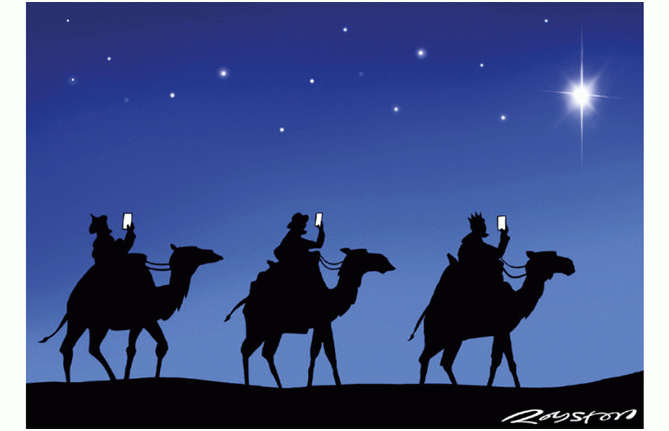
Either in-doors or out;
With the green leaves whispering overhead,
Or the street cries all about;
Where I may read all at my ease,
Both of the new and old;
For a jolly good book whereon to look,
Is better to me than gold.
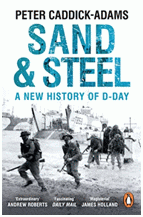
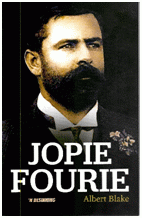
Howick, KZN
4 December 2024
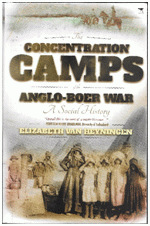
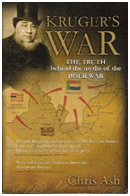
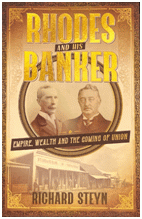
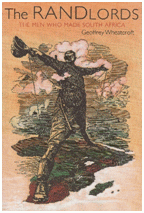
Royal Armouries Leeds +44% Military interest Wallace Collection +17% Natural History Museum +7% British Museum +4% IWM Duxford (aircraft) -5% Military interest National Portrait Gallery -8% Churchill War Rooms -10% Military interest Armouries, Tower of London -11% Military interest National Railway Museum -17% National Museums Liverpool -19% Tate Britain -21% National Gallery -22% Royal Museums, Greenwich -28% Science Museum -30% Tate Modern -34% Imperial War Museum -37% Military interest
by Craig Wilcox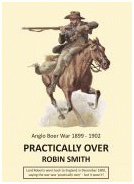
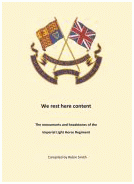
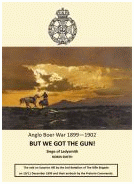
Howick KZN
18 December 2024
ANDRE WESSELS has researched the war and its aftermath for nearly five decades, and has published several books and academic papers on it. We asked him how — and even if — the war should be commemorated.
Here are the facts
“People were put in camps for their protection.”
“They were interned for their safety.”
“They were being taken there so that they could be fed because the farmers were away fighting the Boer War.”
The reality was very different.
* NOTE*
Fast mirror and backup site BOOKMARK
FOR REFERENCE Main
site * NOTE*